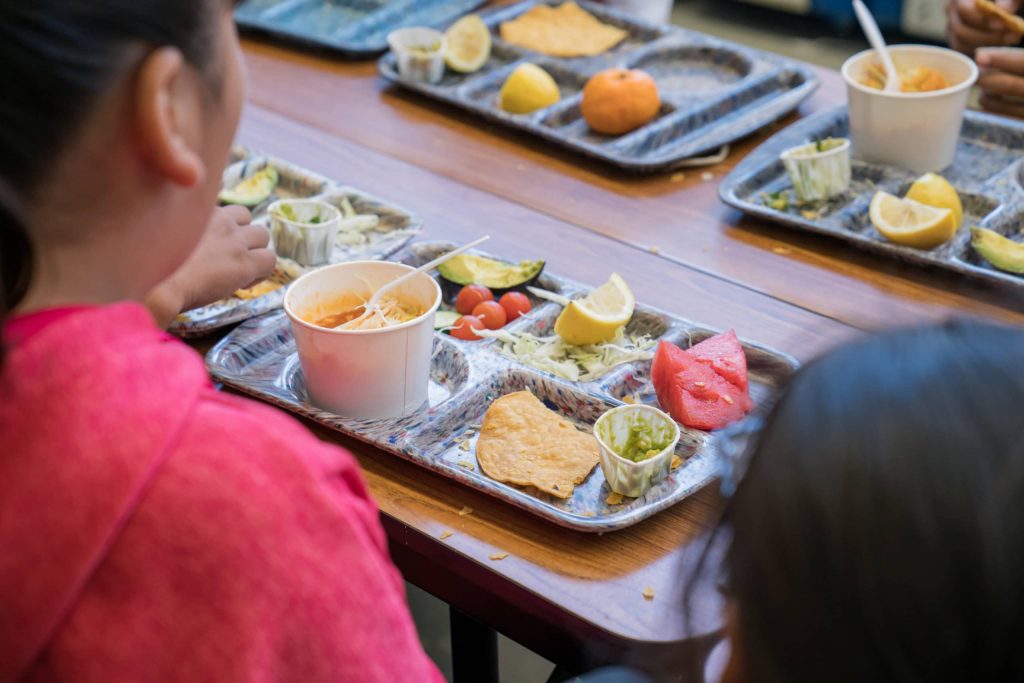What is the Healthy Meals, Healthy Kids Act?
This summer, the House Education and Labor Committee advanced the Healthy Meals, Healthy Kids Act—a much anticipated Child Nutrition Reauthorization (CNR) bill.
This summer, the House Education and Labor Committee advanced the Healthy Meals, Healthy Kids Act—a much anticipated Child Nutrition Reauthorization (CNR) bill.

This summer, the House Education and Labor Committee advanced the Healthy Meals, Healthy Kids Act—a much anticipated Child Nutrition Reauthorization (CNR) bill. While the bill must go through several more legislative hurdles before it becomes law, FoodCorps and other child nutrition advocates have welcomed this legislation as a significant step in a long overdue process to update laws governing school meals and other child nutrition programs. So, what’s in the bill? Here’s what you need to know.
On July 20, House Education and Labor Committee Chairman Bobby Scott (D-VA) and Civil Rights and Human Services Subcommittee Chair Suzanne Bonamici (D-OR) released the Healthy Meals, Healthy Kids Act, which looks to eliminate child hunger and support healthy kids and schools through a series of provisions designed to strengthen and modernize child nutrition programs. On July 27, the committee successfully voted on the bill, sending it to the full House for a floor vote. The bill included numerous critical priority issues that FoodCorps advocates for, which would make a real difference in the lives of our nation’s students.
Yes! The bill would expand the Community Eligibility Provision (CEP) by lowering the eligibility threshold and creating a state-wide CEP option. This means that more school districts would be able to provide free meals to all students in their schools. The bill would also automatically allow children on Medicaid to qualify for free school meals.
The Healthy Meals, Healthy Kids Act is packed with support to strengthen school meals that would nourish students and their families. In addition to expanding access to free school meals, there are a number of other provisions that directly relate to FoodCorps priorities, including:
The bill also includes new language that would encourage schools to consider the food values and cultural connections behind what’s served in school meals. This includes encouraging schools to purchase foods that are not only local, but also are environmentally sustainable, certified organic, animal welfare certified, and from supply chains that support equity, farm worker justice, family farms, local economies, and underserved producers. It would also encourage schools to incorporate culturally appropriate food into their menus.
There are many other provisions included in this robust bill that, while not directly related to FoodCorps’ school food priorities, would significantly support the overall health of our nation’s children and create a more equitable food system. Several of these critical provisions include:
You can read the bill’s full text and find details about all of these provisions here.
The bill currently awaits a floor vote in the House. In order for this CNR bill to be signed into law by the president, it will also need to be considered by the Senate Agriculture Committee and passed by the Senate. While the future of the Healthy Meals, Healthy Kids bill is uncertain, one thing is clear: the proposed investments in these programs are long overdue and desperately needed in order for every child to have access to the nourishing food they need to learn, grow, and thrive. While Congress is scheduled to review CNR every five years, the last reauthorization of these programs was in 2010.
Meanwhile, as advocates continue to press forward on CNR, the nutrition community is looking ahead to the White House Conference on Hunger, Nutrition and Health this September. This landmark conference, the first in over 50 years, will unveil a national strategy to end hunger, improve nutrition, and reduce diet-related diseases. Check out FoodCorps’ policy recommendations for the White House in our new report, based on insights from our school and community partners.
Yes! Your voice matters to your member of Congress. A simple email or phone call goes a long way in making changes for the better. Join us in continuing to urge Congress to support nutritious school meals, hands-on food education, and equity and justice for children, schools, and communities everywhere.
With the White House Conference around the corner, we will continue to push for free school meals for all, local and scratch-cooked meals, and food educators to be placed in every school. Sign up for our action alerts to stay in the loop on the latest policy news and be the first to know when there are action opportunities to get involved.

FoodCorps Announces Rachel Willis, Longtime Educator and Board Member, As President

FoodCorps Frustrated by Cancellation of Farm to School Grants, Another Blow to Local Food

FoodCorps Responds to USDA Cuts to Local Food Spending